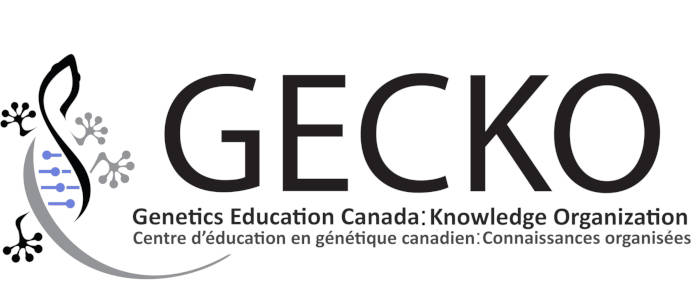Download the PDF here. Click here to view the more comprehensive GECKO deep dive or the point of care tool.
Bottom line: Heritable thoracic aortic disease (HTAD) accounts for 20-25% of thoracic aortic aneurysms and dissections. Most individuals with HTAD do not have additional associated features (non-syndromic). HTAD presents at a younger age and is more aggressive than other thoracic aortic aneurysms (TAA). Appropriate recognition of HTAD allows initiation of imaging surveillance in at-risk relatives. Genetic testing should be offered to individuals with TAA who have at least one of the following red flags:
|
What is heritable thoracic aortic disease (HTAD)?
Approximately 25% of thoracic aortic aneurysms (TAA) are heritable. The remainder are primarily caused by age and hypertension, some may have infectious/inflammatory or traumatic etiologies.
About 20% of individuals with heritable TAA will have no additional associated features (non-syndromic) but will have a positive family history. Five percent of individuals with TAA will have a syndromic condition (e.g. Marfan syndrome, Loeys-Dietz syndrome, vascular Ehlers-Danlos Syndrome (EDS)). These persons may be the first individual with this condition (de novo) in their family.
Individuals with HTAD typically present at a younger age and have more aggressive disease than individuals with degenerative TAA. However, the age of onset, even within members of the same family, can be variable. Both those assigned male and those assigned female at birth can be affected.
TAA are typically asymptomatic but can lead to aortic dissections. Emergency aortic repair is associated with a 50% mortality. Individuals diagnosed with a TAA prior to dissection can benefit from pharmacotherapy, lifestyle modification and, if required, elective surgical repair (associated with a 1-2% mortality rate).
What does the genetic test result mean?
Currently the decision to offer genetic testing is made in the setting of a genetics and/or cardiology consult. Click here to connect to your local genetics centre. Most genetic testing for HTAD is panel-based, where multiple genes are tested concurrently.
The detection rate of genetic testing for HTAD is approximately 20%, which means that 80% of individuals with HTAD will not receive an informative (positive) result.
Genetic test results can be positive (a causative pathogenic variant in a gene is detected), negative/uninformative (no genetic variants of clinical significance detected), true negative (an unaffected individual does not carry the familial causative genetic variant), or variant of uncertain significance (VUS, a genetic variant is detected however whether it is pathogenic or benign cannot be determined at this time). For more on genetic test results see the HTAD GECKO deep dive or GECKO resources on genomic test results.
Who to consider referring for a genetic assessment?
Consider referral for a genetic assessment for individuals with a:
- Thoracic aortic dilation reported on imaging as mild or greater, at age <50y or <60y in the absence of hypertension
- Thoracic aortic dissection at age <60y or <70y in the absence of hypertension
- Thoracic aortic dilation reported on imaging as mild or greater, at any age in the presence of any of the following family histories in a 1st or 2nd degree relative:
- TAA or thoracic aortic dissection
- Sudden cardiac death at age <50y without a confirmed alternate etiology
- Personal or family history of thoracic aortic dilation or TAA at any age, and features that suggest an underlying syndromic condition, such as:
- Tall for family (or tall and from a family where individuals with aneurysms tend to be significantly taller than those without aneurysms)
- Ectopia lentis (lens dislocation)
- Spontaneous pneumothorax (particularly if recurrent)
- Hypertelorism (wide-spaced eyes)
- Bifid uvula
- Hollow organ rupture e.g. uterus, colon
- Spontaneous tendon rupture
- Large and unprovoked bruising (prior to anti-coagulation)
- Very translucent skin
- Pectus carinatum or significant pectus excavatum
- Scoliosis requiring bracing or surgery
- Significant varicose veins at a young age
- 1st or 2nd degree relative in whom a pathogenic or likely pathogenic variant in one of the heritable thoracic aortic disease (HTAD) genes has been identified (referral of 3rd degree relatives can be considered when intervening relatives are not available for or decline testing)
Surveillance and Management
Further details on surveillance and management can be found in the HTAD GECKO deep dive.
Individuals with HTAD should be referred to an aortic clinic (preferably) or to a cardiologist.
For those with HTAD and who have a TAA, management in terms of frequency of imaging, pharmacotherapy, vascular regions requiring ongoing imaging surveillance and surgical threshold will be influenced by the underlying gene (and sometimes the underlying variant). Pharmacotherapy typically includes a beta-blocker or an angiotensin receptor blocker to limit aneurysmal dilation. Participation in competitive sports is usually advised against and isometric exercises should be avoided. Some medications and recreational drugs with a potent vaso-active effect (e.g. triptans, cocaine) are discouraged.
All first-degree relatives of an individual with HTAD should have regular surveillance, unless they test negative for the familial causative genetic variant. The specific surveillance will depend on the underlying gene identified in the family. Referral to an aortic clinic (preferably) or to cardiology and genetics is recommended.
The question of when to initiate screening in children will depend on the earliest age of diagnosis/onset in the family.
First-degree relatives of anyone with a TAA need ongoing imaging surveillance, which typically consists of an echocardiogram (provided the region at-risk can be visualized by echocardiogram), which, if normal, should be repeated every 5 years until at least 65 years of age.
Fluoroquinolones should be avoided as much as possible in anyone with aortic aneurysms or at risk for aortic aneurysm (thoracic or not, heritable or not), because of the associated increased risk of aortic dissection.
Authors: J Richer MD FCCMG FRCPC, S Morrison MS CGC, JE Allanson MD FRCPC, S Walji MD CCFP MPH, JC Carroll MD CCFP
Resources
Hereditary Thoracic Aortic Disease Infographic
Genetic Aortic Disorders Association Canada (GADA)
- Resources and aortopathy clinics across Canada
- If looking to see if there is a cardiogenetics/cardiogenomics or cardiovascular specialty in your area, use the Ctrl +F function to search the page.



